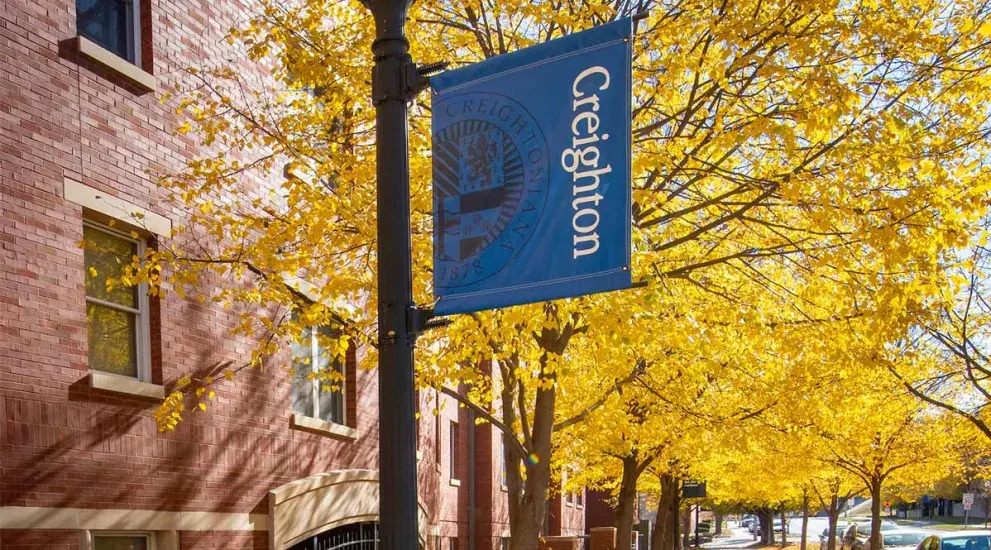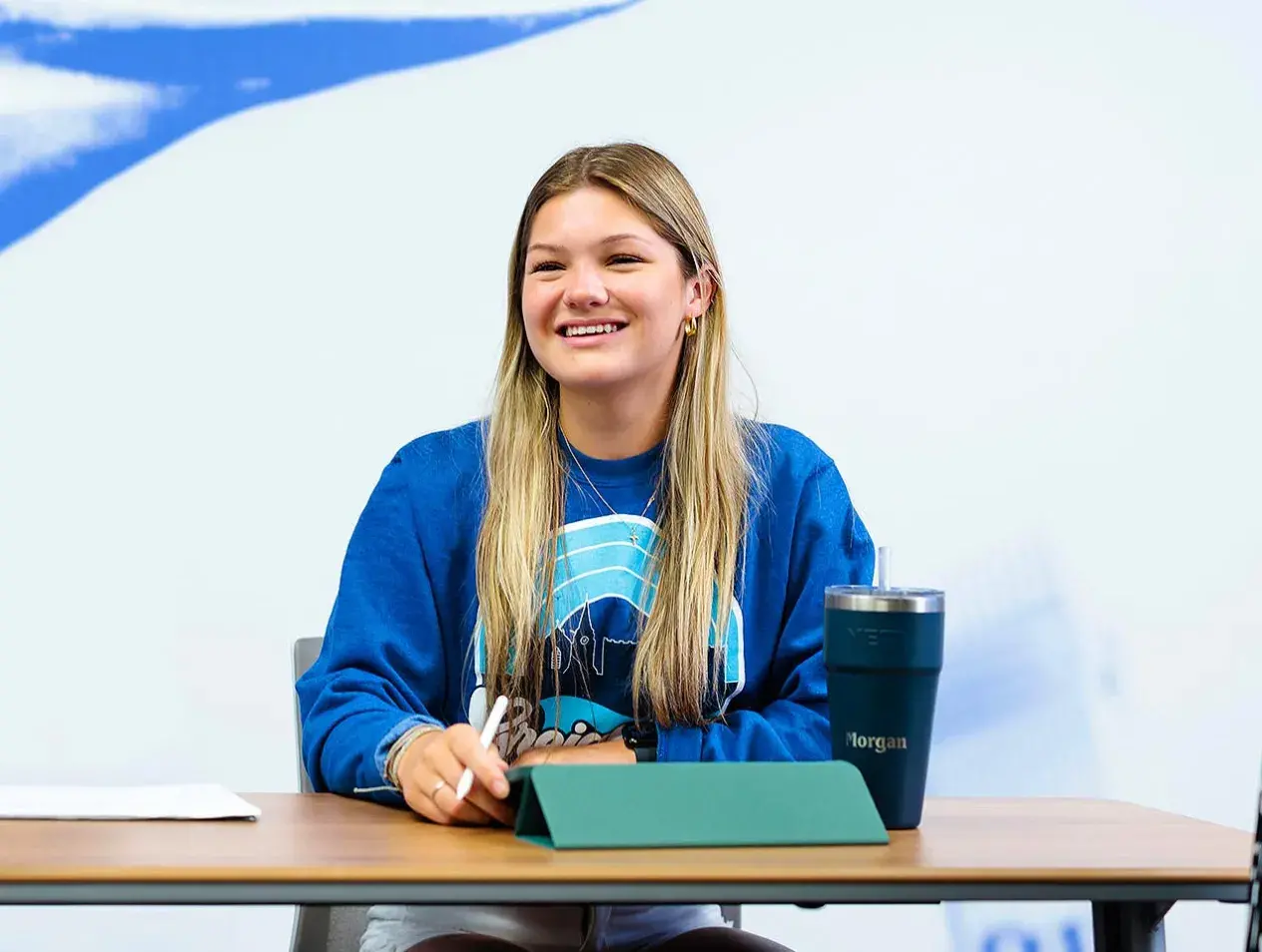
Managing Student Loans
Take Charge of Your Student Loans
Borrowing for a Creighton University education carries serious responsibilities. If you plan carefully, loan repayment will be more manageable. The more informed you are now, the more prepared you’ll be when it comes time to start repaying your loans. Read below for important information and tips.
Borrowing Tips
- Never borrow more than you need. Scholarships, savings, earnings and help from family should be the first choice to pay for school.
- Keep track of how much you borrow each year.
- Stay in touch with your loan servicer.
- At Creighton, many graduating seniors go on to graduate or professional school. Keep undergraduate borrowing to a minimum if you plan to continue borrowing for graduate school.
- Keep copies of all correspondence and documents pertaining to your loan.
- Always open your mail and read all correspondence related to your loan.

Important Info About Interest Capitalization
If you take out student loans, it’s important to be aware of interest capitalization. Interest capitalization happens when the unpaid interest on a student loan is added to the principal balance. This means you end up paying interest on your interest.
When does interest capitalization happen?
The answer varies depending on the type of loan you have.
Federal Direct Subsidized Loans: Interest doesn't capitalize during in-school periods, grace periods or eligible deferment periods. It does capitalize after the grace period ends or if you lose eligibility for deferment.
Federal Direct Unsubsidized Loans and Grad PLUS Loans: Interest can capitalize during in-school periods, grace periods and deferment periods.
Private Loans: Capitalization policies vary by lender, so it's crucial to review your loan agreement.
For unsubsidized direct loans and Grad PLUS loans, the loan servicer will generally add the accrued (capitalized) interest to the principal balance at the time of repayment. If you choose to let the interest accrue, this may add up substantially while you’re in school. For example, a $10,000 loan at 8% interest will add $800 to your balance each year you’re in school.
Remember, interest will accrue on each loan borrowed for every year you are in school. It’s highly recommended that you make periodic interest payments on your loan. If you choose to let the interest accrue, send what you can when you can.
Repaying Your Student Loans
Inevitably, the time will come when you must begin repaying your student loans. If you have planned ahead, the process of repayment will probably go quite smoothly. Repayment generally begins six months after graduation or when you are no longer enrolled at least half time. When you leave school, develop a budget that includes your student loan repayment, and keep in mind that student loan repayment does affect your credit score.
Your loan servicer will place you in the Standard Repayment Plan unless you request another plan. To find out what lender or servicer is holding your current and past Stafford, PLUS and Grad PLUS loans please go to studentaid.gov.
Below are some key terms to understand:
Pre-payment: You may pre-pay all or part of your loan at any time without penalty. This may substantially decrease your total interest costs.
Standard payment plan: The maximum repayment period is 10 years (excluding periods of deferment or forbearance). See repayment chart below for estimated payments.
Graduated payment plan: You may begin to repay the loan with small monthly payments that increase over time. This option assumes that your income will grow enough to cover the increasing loan payments. You will pay a somewhat higher amount of interest than you would under the standard plan.
Income-driven repayment plan: You may lower your monthly payments based on monthly income, through options such as the Income-Based Repayment plan or Pay As You Earn plan. Contact your loan servicer for more information.
Extended repayment plan: This plan is available if you borrow a student loan for the first time after October 7, 1998 and you have more than $30,000 in student loans. Payments can be extended for up to 25 years.
Loan calculators: See the calculators at finaid.org to calculate loan payments and more. Or take a look at the loan simulator to explore loan repayment options.
Consolidation: Your outstanding loans (Federal Stafford, Unsubsidized Stafford, Grad PLUS, Perkins, HPSL and Nursing Student Loan Program) can be combined into a single new loan with new terms, i.e., a new interest rate and a longer repayment period (up to 30 years). While this may reduce your monthly payments, it will result in higher total interest costs. Anyone interested in consolidating loans should visit the Federal Student Aid website for more information.
Loan cancellation: Loans may be cancelled upon the death or total and permanent disability of the borrower, or upon the death of the student on whose behalf a parent borrowed a Federal PLUS Loan.
Public service loan forgiveness (PSLF): A program that allows borrowers with direct loans to have the remaining balance of their federal loans forgiven after 10 years of full-time employment in an eligible organization and 120 satisfactory payments. Eligible loans are the direct subsidized, unsubsidized, GradPlus and consolidation loans. To get other federal loans such as Perkins, Health Professions Student Loan, FFELP Stafford subsidized, unsubsidized or GradPlus loans eligible for forgiveness, borrowers must complete a direct consolidation loan. Learn more about PSLF.
Standard Repayment Schedule
The schedule below assumes the unsubsidized interest rate of 6.8% and does not include interest that may have been capitalized.
| Principal Amount | Monthly Payment | Total Interest Paid |
|---|---|---|
| $10,000 | $115 | $3,809 |
| $20,000 | $230 | $7,619 |
| $25,000 | $288 | $9,524 |
| $40,000 | $460 | $15,239 |
| $50,000 | $575 | $19,048 |
As a general rule, you may estimate your monthly payment to be $115.00 for every $10,000 subsidized/unsubsidized loan you borrow. For Grad PLUS loans at 7.9% interest, you may estimate your monthly payment to be $125 for every $10,000 you borrow.

What if I Can’t Repay My Loan?
If, for whatever reason, you’re unable to make your payment, contact your loan servicer. They will work with you because they don't want to see you default on your loan. You may be eligible to apply for an economic hardship deferment or a forbearance. By temporarily postponing your payments until you can resume your repayment, your loan will not be considered delinquent. Interest will still accrue, but you are being allowed some extra time to get back on your feet.
If you are not sure who your loan servicer is, visit studentaid.gov to find out.
Exit Interview and Counseling
The loan exit interview and exit counseling are important as you prepare for the repayment of your federal student loan(s) when you graduate, leave school or drop below half-time enrollment. The exit interview is required by Creighton and the exit counseling is required by the U.S. Department of Education. Complete exit counseling at studentaid.gov.
Exit Interview
An exit interview is required if you have borrowed these loans:
- Subsidized
- Unsubsidized
- PLUS
- Perkins
- Nursing
- Nurse Faculty
- Health Professions
- Primary Care
How to complete the required exit interview
- Locate the email you receive from webmaster@ecsi.net
- The email will be titled: STUDENT LOAN REQUIREMENT FOR CREIGHTON UNIVERSITY
- The email contains instructions for your exit interview. Read carefully.
- If you cannot locate the email, go to heartland.esci.net > Contact Us to request the instructions for your exit interview.
Your Loan History
Currently enrolled students can access the types and amounts of student loans they borrowed for each academic year at Creighton by going to the NEST. Follow the Financial Aid links to "Award" then "Award History."
If you’re looking for a comprehensive view of your federal student loans, the National Student Loan Data System, will provide a loan history for your federal loans. You can also log in to studentaid.gov to find loan information. Private or alternative loans will not be listed.
If you are not sure who your alternative student loan provider is, contact the Creighton Financial Aid Office at 402.280.2731 or finaid@creighton.edu. If you took out alternative loans while attending another school, contact them for more information.


Loan Disputes
The Federal Student Aid Ombudsman works with federal student loan borrowers to resolve loan disputes or problems from an impartial, independent viewpoint. If you have a problem with a federal student loan, you should contact the holder of the loan and try to resolve the problem. If you can’t resolve the problem, contact the Federal Student Aid Ombudsman.




